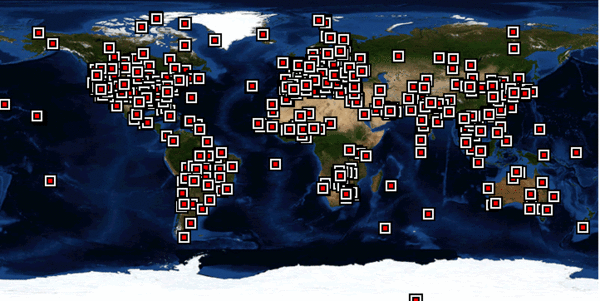
Overview
The Aerosol Robotic Network AERONET is a global network of ground-based Sun-photometer stations. It is managed in the frame of a cooperation between NASA and PHOTONS.
The primary paramter derived by AERONET is the aerosol optical depth.
The calculates base parameter of AERONET is the optical thickness. Aerosol optical depth data are computed for three data quality levels: Level 1.0 (unscreened), Level 1.5 (cloud-screened), and Level 2.0 (cloud-screened and quality-assured).
The network aspires a standardization of instruments, calibration, data processing, and data distribution. For this reason, AERONET relies on a centralized data processing. Only instruments of the same type are operated which are calibrated regularly.
Until the end of 2013 the data set of AERONET comprised 1100 stations, which in part provide data since 1993.

AERONET at TROPOS
Sun-photometer measurements are an important tool for the derivation of physical aerosol properties during daylight conditions. Especially from the combination with lidar measurements the retrieval of vertically resolved profiles of the aerosol distribution during daytime is possible.
At the majority of the lidar stations run by TROPOS, Sun photometers are operated on-site. Amongst others, this was the case during the SAMUM campaigns in Morocco and Cape Verde, in the Amazon rain forest, and during SALTRACE.
TROPOS is steadily working on the extension and validation of data analysis algorithms that are based on combined measurements of lidar and Sun photometer. The technique Poliphon was developed to separate volcanic aerosol into its spherical (sulfate) and non-spherical (ash) contributions. Poliphon was already compared to the already-existing method LIRIC (Lidar/Radiometer Inversion Code (LIRIC)).
references
A. Ansmann, et al. (2011): Ash and fine-mode particle mass profiles from EARLINET-AERONET observations over central Europe after the eruptions of the Eyjafjallajökull volcano in 2010
J. Wagner, et al. (2013): Evaluation of the Lidar/Radiometer Inversion Code (LIRIC) to determine microphysical properties of volcanic and desert dust
